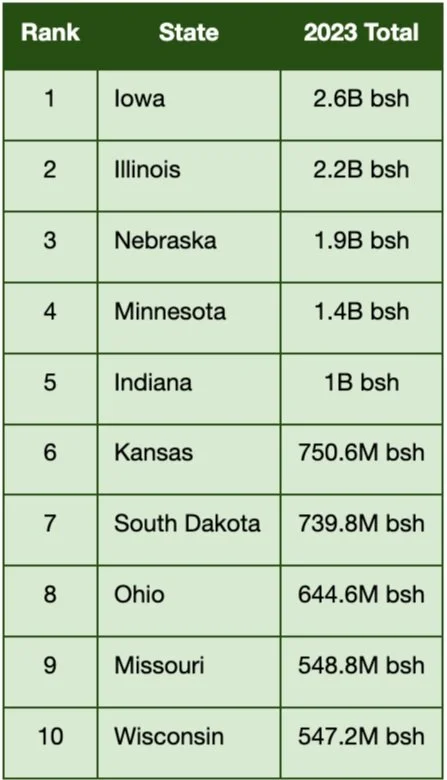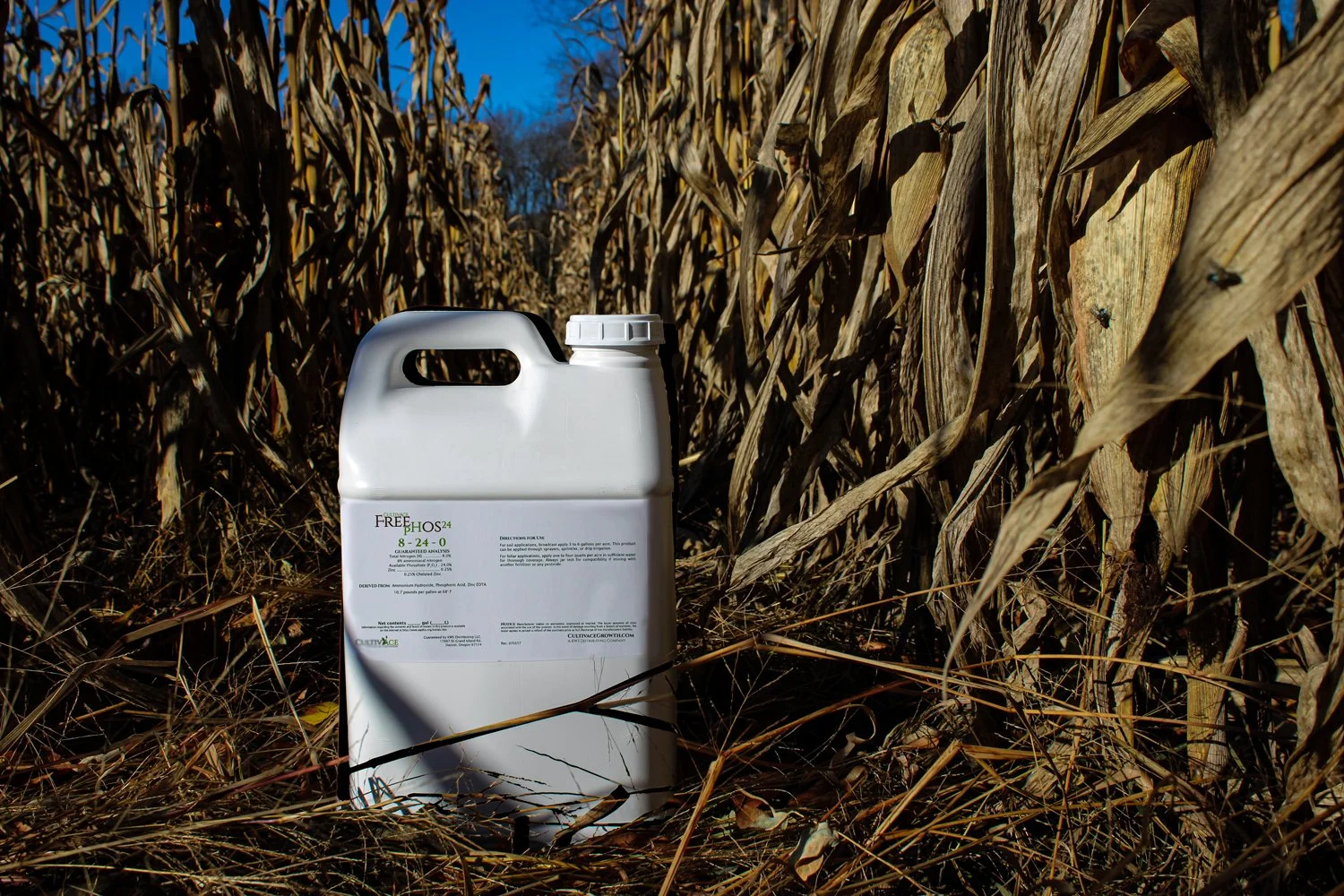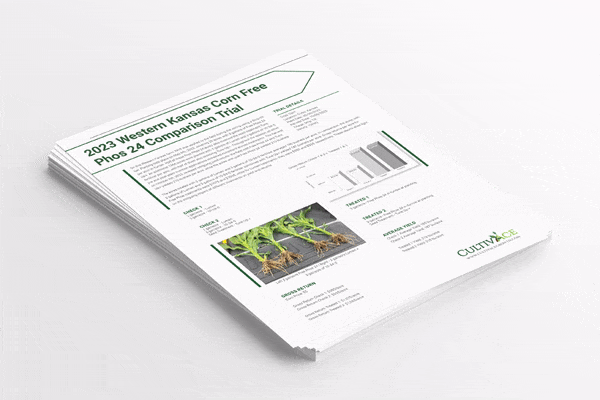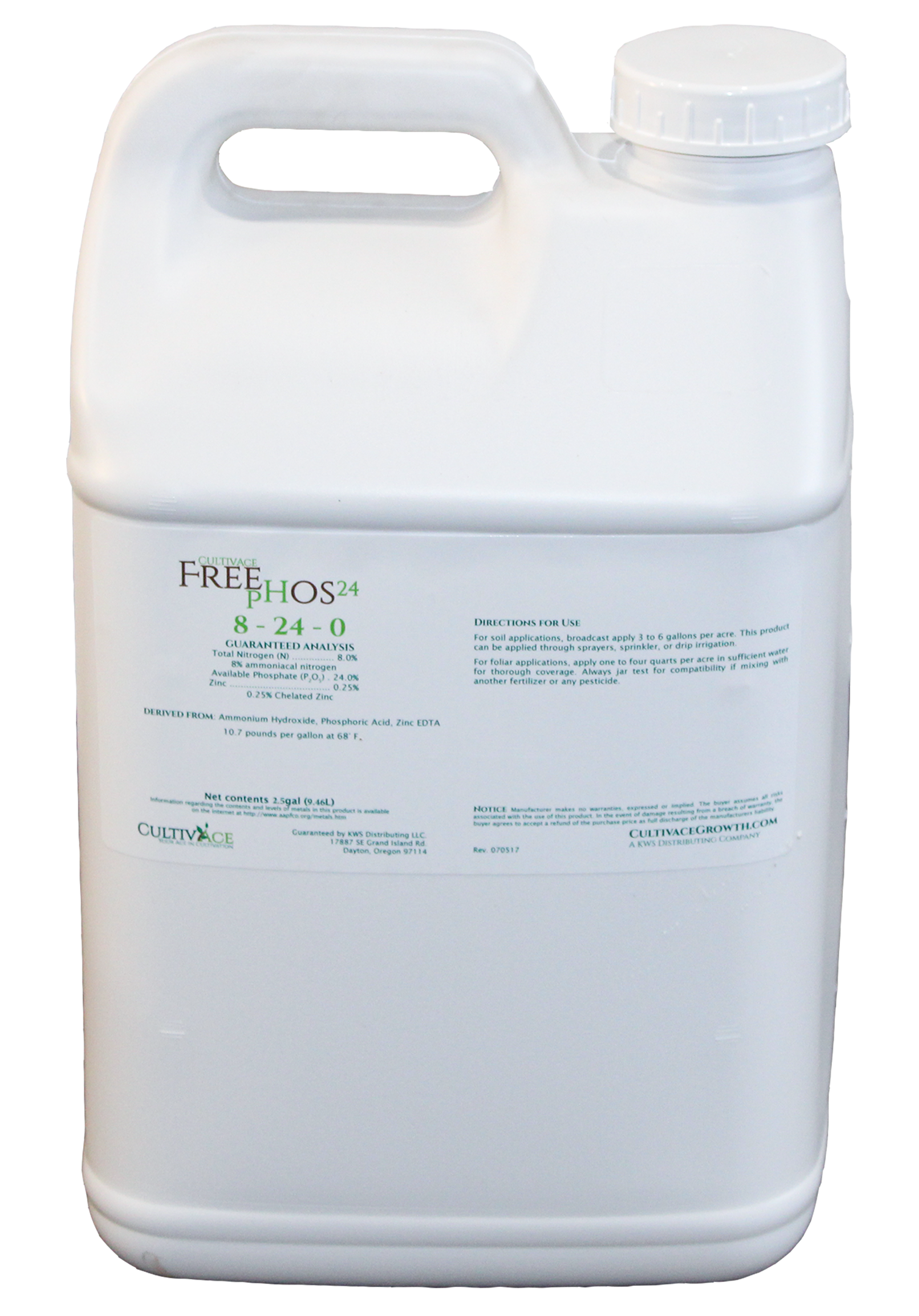Comparing Liquid Phosphate Fertilizers: Midwest Corn Yields
While CultivAce has established a strong presence on the West Coast, the products have yet to be discovered in the Midwest. Because of our product, Free Phos 24’s success on corn, we felt it important to do the research in the highest density corn acres in the country. Corn growers in just the top 5 US states, all from the Midwest produce over 60% of all corn, grown within the US.
2023 Top 10 Corn Production by State
Data by Wizevoter.com
For our project, local growers became our trusted partners, receiving trial quantities of our row starter liquid phosphate fertilizer, Free Phos 24. At the end of 2022, we started our campaign, inviting growers to apply for trial material.
Growers embraced this opportunity wholeheartedly, applying Free Phos 24 in-furrow across the Midwest. They were encouraged to explore the potential through multiple passes and side-by-side comparisons, embarking on a journey of agricultural discovery in our quest to better serve the heartland.
To give a little background, Free Phos 24 is our row starter liquid phosphate fertilizer designed primarily to be applied in-furrow. Unlike many starter fertilizers, Free Phos 24, which is an 8-24-0, also contains a carbon source and biological food sources to encourage biological activity.
This liquid phosphate starter delivers an initial shot of phosphorus while feeding soil biology to facilitate long-term phosphate release throughout the growing season. In most soils, a large portion of organic phosphate exists that plants cannot utilize. This bound phosphate is equivalent to having money locked away in a safe but lacking a key to open that safe. Your soil’s biology is the key in this case.
We know that soil biology produces organic acids that break the bonds that keep phosphate bound. This process is called solubilizing phosphate and the biology responsible are called phosphate solubilizing microorganisms (biology). Both bacteria and Fungi can perform this function, but according to Tariq et al, bacteria are more efficient in this process. In many soil environments, this biology exists but can be lacking, or even absent. Through the application of biological food sources, Free Phos 24 liquid phosphate fertilizer seeks to propagate this beneficial biology, allowing growers to make the most of the phosphate already present in the soil. While this is a fairly simplistic explanation of how soil biology can release phosphate, it’s important to understand how much phosphorus is available or being released throughout the growing season.
Those interested in more research on this subject, especially in phosphate solubilizing bacteria, can view this resource provided by the USDA. - https://www.srs.fs.usda.gov/pubs/ja/2020/ja_2020_ouyang_004.pdf.
The two trials below took place on two different farms in Kansas, one in Western Kansas, and the other in Eastern Kansas. In these trial abstracts, we offer a preview of our findings. If you would like more comprehensive insights, about other trials we conducted in 2023, click here, or visit our Trial Library for all trials.
Importantly, these results represent an appetizer to our research in the Midwest, with much more to come. We look forward to sharing further insights and improvements in yield. To stay updated on our progress and receive notifications about upcoming trial results, we invite you to subscribe to our mailing list. Your subscription will ensure that you're among the first to learn about updated trials, promotions, and other important industry news. This is some of the earliest data we have received back, so be on the lookout for more in the future. Both below trials are in corn and saw Free Phos 24 applied in-furrow at rates of 3 gallons per acre. Additionally, both trials went up against other popular liquid phosphate starter fertilizers.
1. Colby, Kansas Corn Trial
The grower applied NH3 to the field in the Spring on this Western Kansas farm using a Strip-till bar. The grower planted this irrigated field on May 6th, 2023. The grower planted 20 acres using 3 gallons of Free Phos 24 per acre in-furrow. Half of the acres of Free Phos 24 also received a seed treatment called Tune Up+. The grower planted an additional 1366 acres using 2 gallons of Lumen, and 3 gallons of 10-34-0 fertilizer per acre, half of which also received the same Tune Up+ application. All other pre and post-plant nutrition applications throughout the season were identical between treatments. The grower harvested on October 6th, 2023 with interesting yield results reported. The ending yield results for the field with Free Phos 24 and Tune Up+ yielded 215 bushels per acre. The acres with just Free Phos 24 yielded 213 bushels per acre.
The acres applied with 2 gallons of Lumen and 3 gallons of 10-34-0 fertilizer yielded an average of 190 bushels per acre. In comparison, the acres with 2 gallons of Lumen and 3 gallons of 10-34-0 fertilizer and Tune Up+ yielded 187 bushels per acre. The gross return per acre on Free Phos treatments was $1075 + $1065 while the gross return on Lumen treatments was $950 + $935, respectively.
2. Sedgwick, Kansas Corn Trial
The grower planted this irrigated Eastern Kansas corn field on April 20, 2023. The grower planted 10 acres using Free Phos 24 at a rate of 3 gallons per acre applied in-furrow. The grower planted additional acres using standard practice of 4.5 gallons of Pro Germinator, 1.5 gallons Kalibrate, 1 qt Micro-500, and 1 pint manganese per acre applied in-furrow. All other pre-plant and post-plant nutrition remained the same throughout all treatments. The grower harvested on October 12, 2023. The grower measured yield with a grain cart and estimated yield results for the grower standard and Free Phos 24 yields at 202.9 bushels per acre. Although yields were estimated to be identical, treatment costs for Free Phos 24 were estimated to be significantly lower. The grower was able to use half the total product volume at a lower per-acre cost and obtain identical yield results.
In an initial look into the trials conducted in Eastern and Western Kansas, it appears that our liquid phosphate starter fertilizer, Free Phos 24, has shown encouraging results. The results from these trials are concentrated on the area, and many variables must be considered, but this is continued positive feedback on the product and a testament to its efficacy.
With many liquid phosphate fertilizer options available, we are determined to prove Free Phos 24 stands out in efficiency and yield. In an industry that demands a proven track record supported by advanced agricultural technology and rigorous scientific research CultivAce is dedicated to representing our 8-24-0 liquid phosphate fertilizer as a high-quality, effective product.
Traditionally, it's believed that using more liquid phosphate fertilizer equates to better results. However, this conventional wisdom often leads to phosphate being trapped in the soil, rendering it unavailable to the plant. Where Free Phos differs, it not only nourishes plants but also elevates soil biology. By stimulating soil biology, Free Phos 24 acts as a catalyst for the gradual release of soil nutrients that would otherwise remain locked away from the plant's reach. This transformative process is where Free Phos begins to pull ahead.
In summary, the success of Free Phos 24 in both the Colby and Sedgwick, Kansas trials is a preview of its unique ability to unlock the potential of phosphate in the soil and make it available to the plant.
If you’d like more data, trials, or updates on these trials and their outcomes, we invite you to explore Free Phos 24 further by visiting our product page and subscribing to our Newsletter, to get the latest in product and trial information.







